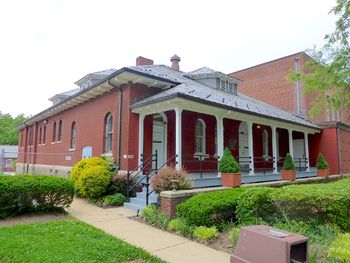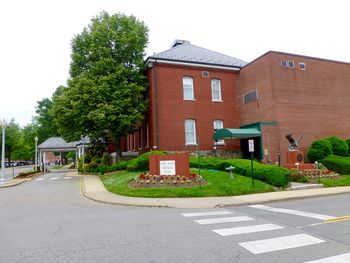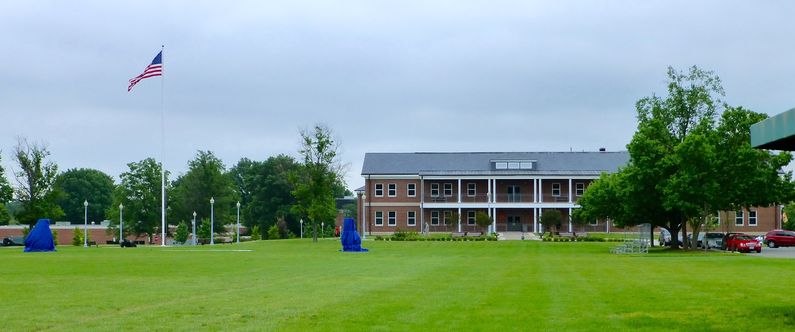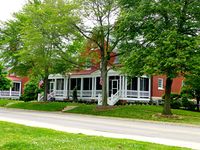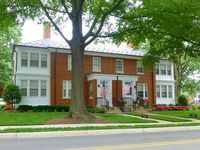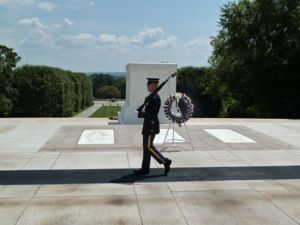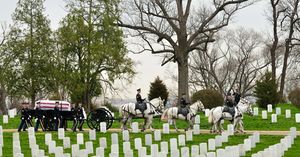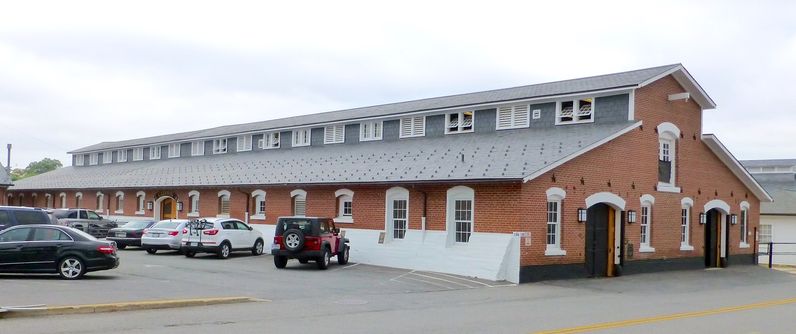Fort Myer
|
Fort Myer (1861-Present) - From the original 1,100 acres of the Custis-Lee Estate, it was first established as a Union defense in 1861 during the U.S. Civil War when Fort Cass, Virginia, a lunette which was constructed by the 9th Massachusetts Infantry Regiment in June 1861, the name of the fortification was later changed to honor Colonel Thomas Cass, the regiment’s first commander who was killed in 1862 and later included an additional fortification Fort Whipple. Named after Major General Amiel W. Whipple (Cullum 1063), who died 7 May 1863 of wounds suffered at the Battle of Chancellorsville. Fort Whipple was renamed Fort Myer on 4 Feb 1881 for Brigadier General Albert J. Myer, first U.S. Army Chief Signal Officer. Active military installation. Now a component of Joint Base Myer-Henderson Hall. History of Fort MyerEstablished as Fort Whipple during the U.S. Civil War and became one of the circles of Union defenses around Washington DC. Fort Whipple was built in 1862 on the property then known as the Arlington Estate of Confederate General Robert E. Lee, (Cullum 542), which overlooked the Potomac River and Washington DC. The post was situated on the high ground northeast of present-day Arlington Boulevard and Pershing Drive. It was a bastioned earthwork with a perimeter of 640 yards and emplacements for 47 guns. This fort was one of the few earthworks fortifications around Washington retained after the end of the U.S. Civil War. The post was upgraded with permanent type buildings beginning in 1872 and became Fort Myer on 4 Feb 1881. The post was divided by the Arlington National Cemetery into two separate areas. Fort Myer became the US Army's cavalry showplace starting in 1887 at the direction of General Philip H. Sheridan, (Cullum 1612), then the Army's commanding general. As many as 1,500 horses at a time were stabled at the fort from 1887 to 1949, and Army horsemanship in the form of exhibitions, trials and polo matches became an important part of Washington's official and social life. Construction continued at the post and most of the buildings at the north end of Fort Myer were built in the period between 1895 and 1908. Many of those remaining structures are designated historic landmarks. Quarters One was completed in 1899 as the post commander's house. Since 1908, Quarters One has been the home of the Army chief of staff. Generals George C. Marshall, Omar N. Bradley, Douglas MacArthur and Dwight D. Eisenhower have lived in Quarters One. The Fort Myer parade was the site of the first military test flight of an aircraft on 9 Sep 1908 by Orville Wright. Wright's second test flight ended in tragedy when the aircraft crashed and his passenger, Lt. Thomas Selfridge, became the first powered aviation fatality. During World War II, Fort Myer served as a processing center for soldiers and as a garrison for troops stationed in Washington DC area. After the war the Army's oldest infantry unit, the 3rd U.S. Infantry (The Old Guard) was reactivated in 1948 and assigned to Fort Myer and Fort Lesley J. McNair as the Army's official ceremonial unit and security force in the Washington metropolitan area.
Current StatusAn active military installation, a part of the U.S. Army Military District of Washington and Joint Base Myer-Henderson Hall. Units stationed at the fort provide protection for the President and the US Capital, they guard the Tomb of the Unknown Soldier 24/7, and they furnish military units for ceremonies held within the adjacent Arlington National Cemetery and the US Capitol complex. The Old Guard (3rd U.S. Infantry) stationed at Fort Myer since 1948 is the Army's official ceremonial unit and escort to the president, and it also provides security for Washington, DC in time of national emergency. The units of the 3rd U.S. Infantry stationed at Fort Myer provide details for standard and full honors funerals in Arlington National Cemetery and for dignified transfers at Dover Air Force Base. The Old Guard's ceremonial tasks include full honor arrivals for visiting dignitaries, wreath ceremonies at the Tomb of the Unknown Soldier, and full honor reviews in support of senior army leaders and retiring soldiers. They provide 24/7 Tomb Guards at the Tomb of the Unknown Soldier and special ceremonial units including three Colonial Marching Platoons, the Old Guard Fife & Drum Corps, the Continental Color Guard, the United States Army Drill Team, the Presidential Salute Battery and the US Army Caisson Platoon.
See Also:
Sources:
Links: Visited: 21 May 2013 | ||||||||||||||||||||||||||||||||||||||||||||||||||||||||||||||||||||||||
